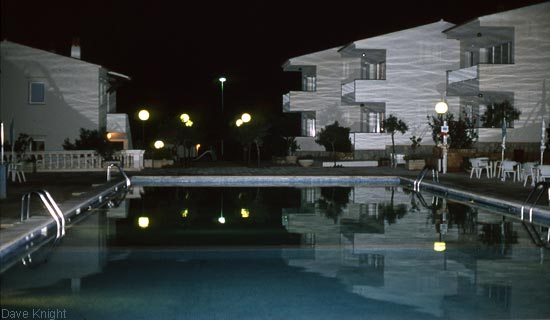 |
Polarisation of light
When light travelling in air strikes the surface of a body of water at a shallow angle, it is split into two components; the refracted ray, which penetrates the water, and the reflected ray, which bounces from the surface. What may be less obvious is that the two components are of different polarisation; the reflected ray having its electric field parallel to the surface and being said to be horizontally polarised, and the refracted ray having its e-field perpendicular to the surface, and being said to be vertically polarised. This means that we can separate rays reflected from the surface from rays coming from under the surface using a polarising filter, i.e., a rotatable filter made from material that blocks the passage of polarised light of a particular orientation.
The effect of a polarising filter is illustrated by the three photographs below (which were taken in Constantine Bay, near Padstow, Cornwall, UK).

No filter

Horizontal polarisation. Vertically polarised light is blocked and what lies under the water cannot be seen.

Vertical polarisation. Horizontally polarised light is blocked, eliminating surface glare and allowing us to see through the water.
Note that polaroid (or polarised, or anti-glare) sunglasses are designed to facilitate driving by suppressing horizontally polarised reflections from road surfaces. They work equally well in suppressing reflections from the surface of water, and are therefore extremely useful for the purpose of assessing underwater conditions from above.
 When purchasing
sunglasses, pick up two pairs of alleged polarisers and look through
two lenses at once. If they are genuine, the combination will
go dark when one is rotated at 90° relative to the other.
When purchasing
sunglasses, pick up two pairs of alleged polarisers and look through
two lenses at once. If they are genuine, the combination will
go dark when one is rotated at 90° relative to the other.Bounce lighting

Here light from a flash has been bounced from an air-water boundary to illuminate the buildings beyond. In this case the light striking the surface is split into two components of opposite polarisation, the horizontally polarised component being reflected and the vertically polarised component entering the water. A polarising filter fitted to the camera can be rotated to enhance either the surface reflections or the view beneath the water.
DWK
© David W Knight 2012